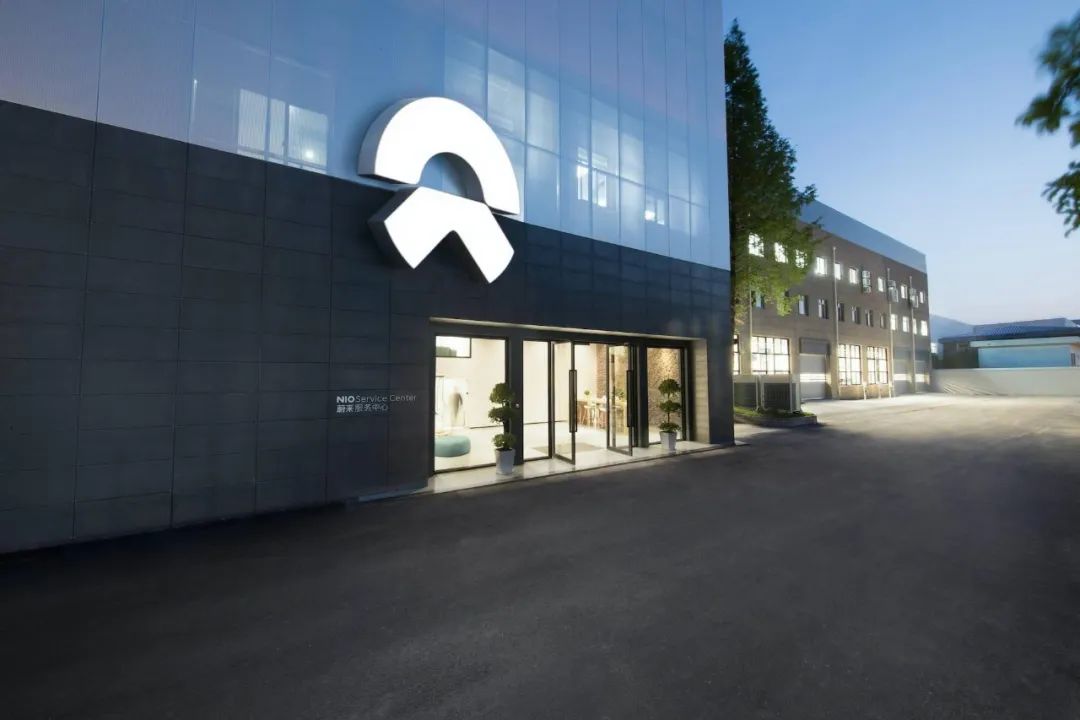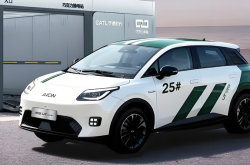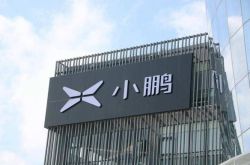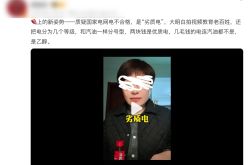Double Sales Targets: Aggression Versus Anxiety
![]() 01/20 2025
01/20 2025
![]() 587
587
Reviewing the week's auto stocks, we observe the diverse dynamics shaping the automotive market.
This week, the stock market welcomed positive news once again.
The Shanghai Composite Index rose 2.31%, the Shenzhen Component Index gained 3.73%, the ChiNext Index surged 4.66%, the STAR 50 Index increased 1.61%, and the Beijing Stock Exchange 50 Index soared 9.63%. In Hong Kong, the Hang Seng Index climbed 2.73%, and the Hang Seng Tech Index jumped 5.13%.
Renowned investment institutions such as Goldman Sachs and JPMorgan Chase issued research reports upgrading their ratings on Chinese assets, expressing optimism about China's capital market in 2025. At the 25th UBS Greater China Conference held on January 13, the China equity strategist at UBS Securities predicted that overall corporate earnings in A-shares will significantly improve in 2025, with the earnings growth rate of the CSI 300 Index anticipated to be around 6%.
Shifting focus to the automotive sector, the Hong Kong stock market rose on Friday, with XPeng Motors up over 7%, Geely Automobile up more than 4%, and NIO and Leap Motor up over 2%.
This overall price surge aligns with predictions made by the China Association of Automobile Manufacturers (CAAM) and the setting of respective sales targets.
CAAM forecasts a relatively optimistic auto market in 2025, potentially reaching 33 million vehicles, an increase of about 4%, with new energy vehicles accounting for approximately 16 million. 2025 could be a pivotal year for domestic brands to accelerate the restructuring of the competitive landscape, with their market share expected to exceed 70%.
Amidst this change, both traditional automakers and new players are actively seeking breakthroughs. Traditional automakers project a path of "steady progress with ambition".
For instance, after delivering 2.003 million vehicles in 2024, GAC Group set a target of 2.3 million vehicles for 2025, representing a 15% growth rate. Changan Automobile's 2025 annual target is 3 million vehicles, a 12% growth rate.
Dongfeng Motor Group aims for a 21% growth rate, planning to reach 3 million vehicles in 2025, while Geely Automobile targets 2.71 million vehicles, a target growth rate of 25%. Among traditional automakers, only Dongfeng Motor and Geely have target growth rates exceeding 20%.
While the annual sales targets might not seem overly ambitious, the "ambition" of major automakers in the new energy sector is evident. Take Geely, for example. More aggressive than the 25% incremental target for overall sales is Geely's target for new energy vehicle sales. It aims to sell 1.5 million vehicles, a 68.7% increase from the 889,000 vehicles sold in 2024, a bold prediction indeed.
Among these, Geely Galaxy, as the main sales contributor, has a target set by Geely Auto Group CEO Gan Jiayue to sell one million vehicles annually for the brand, which was established just two years ago. Data shows that Geely Galaxy sold over 494,400 new vehicles in 2024. To achieve the annual sales target of one million vehicles, sales in 2025 would need to double.

Netizens describe Geely as "choosing to secretly roll up while grumbling" between endorsing and opposing the "rolling up" trend, and the capital market has recognized this strategy, with the stock price rising by over 4%.
Changan Automobile is equally ambitious, setting a sales target of 220,000 vehicles for the AVITR brand by 2025, representing a target growth rate of 197%, and a target growth rate of over 100% for the Deep Blue brand.
Dongfeng has set a sales target of 200,000 vehicles for the Voyah brand in 2025, representing a target growth rate of 133%. Voyah indeed has the confidence. As CEO Lu Fang puts it, "Voyah listens to advice," and it has finally entered a harvest period. Data shows that Voyah sold a total of 85,697 vehicles in 2024, an increase of 70% year-on-year, with sales exceeding 10,000 vehicles for four consecutive months.
BYD has yet to announce a clear sales target for 2025. In 2024, BYD exceeded its annual target of 3.6 million vehicles, reaching a new record of 4.27 million vehicles. Market predictions suggest that BYD may aim for a new high of 5.5 million vehicles.
Compared to traditional automakers, new players like NIO, XPeng, and Li Auto have shown their usual momentum in setting targets, being notably "aggressive." Hongmeng Zhixing, Xiaomi, and NIO have all set sales target growth rates that double year-on-year.
Let's start with XPeng Motors, whose stock price rose by 7% but fell short of its sales target.
Data shows that in December 2024, XPeng Motors delivered a total of 36,695 smart electric vehicles, an increase of 82% year-on-year and 19% month-on-month. Among these, the delivery volume of XPeng MONA M03 exceeded 15,000 vehicles, and the delivery volume of XPeng P7+ surpassed 10,000 vehicles.

At the beginning of 2024, XPeng Motors set a sales target of 280,000 vehicles but later revised it down to 200,000 vehicles due to repeated failures to meet expectations. Ultimately, it achieved only 95% of the revised target.
However, He Xiaopeng remains unhurried. Reflecting on 2024, He Xiaopeng candidly stated that it was a memorable year and a year of "moving forward against the wind." In a recent interview, he shared advice given to him by Lei Jun: "Mr. Lei also advised that XPeng should emerge from technology and products, do more marketing, and pay more attention to social media."
"He does this much better than I do," said He Xiaopeng. "Engaging in social media, understanding users, and becoming friends with them are indeed things that need to be learned. I don't think there's any shortcut." He Xiaopeng acknowledged that this is actually a process of mutual verification and exchange.
Following the exchange, XPeng announced an ambitious new car plan aimed at further consolidating its position in the electric vehicle market. Looking ahead to 2025, XPeng Motors has set an annual sales target of 350,000 vehicles, representing an 84% increase compared to 2024. To achieve this goal, XPeng plans to launch multiple new products, including 3 all-new models and 4 facelifted models.
He Xiaopeng predicts that the period from 2025 to 2027 will be a crucial elimination phase for China's auto industry, during which the market penetration rate of new energy vehicles in China is expected to reach 85% or higher. The integration of AI technology is expected to trigger a redistribution of market share. This is also XPeng's bargaining chip in the capital market.
Starting from the third quarter of last year, XPeng's sales have improved, providing a relatively satisfactory answer for the year. The market has also restored confidence in XPeng, and its stock price has gradually recovered. Currently, it has maintained its position in the top 10 Chinese automakers by market value.
Leap Motor and NIO, both with a stock price increase of 2%, showed different sales performances.
In 2024, Leap Motor exceeded its annual sales target and recently issued a profit forecast indicating that the company achieved a positive net profit in the fourth quarter of 2024, reaching its quarterly profit target a year ahead of schedule. This means that Leap Motor has become the second Chinese new energy vehicle maker to achieve profitability after Li Auto.
However, Li Auto delivered 500,000 vehicles throughout the year, successfully completing its annual sales target. For 2025, it has chosen a more conservative growth strategy, setting a target sales volume of 700,000 vehicles, representing a target growth rate of 40%. However, what troubles founder Li Xiang is the successive setbacks of the MEGA project and the year-on-year decline in net profit growth, leading to a cold reception in the capital market and no significant improvement in market value.
Similarly, NIO, with a stock price increase of 2%, delivered a total of 221,970 new vehicles in 2024, an increase of 38.7% year-on-year. Among these, 201,209 new vehicles were delivered under the NIO brand, an increase of 25.7% year-on-year, and 20,761 new vehicles were delivered under the Ledao brand. This performance is average. For 2025, NIO has set a more aggressive target: to double sales and achieve an annual sales volume of 440,000 vehicles.

NIO's confidence stems from the formal establishment of its multi-brand strategy, covering a wider price range and more market segments in 2025 with the NIO brand, Ledao brand, and Firefly brand, all firing on all cylinders to help NIO achieve sales doubling in 2025.
If asked what the biggest change in 2024 was, one answer would be Xiaomi's market value replacing BYD's to rank first among Chinese automakers and third globally, with a value of $112.006 billion.
2024 was the first year that Xiaomi Automobile entered the market, delivering a cumulative total of 135,000 new vehicles throughout the year, exceeding its annual target of 130,000 vehicles with a target completion rate of 103.8%. Building on this, Lei Jun announced on the last day of 2024 a target of "delivering 300,000 vehicles in 2025," representing a target growth rate of 122%.
To achieve doubling, Lei Jun once again leveraged his marketing prowess. On January 12, Lei Jun released a video showing his visit to Heihe for winter testing and sharing the winter testing results of Xiaomi Automobile. Lei Jun said, "In the 2024 Dongchedi Global Winter Test, Xiaomi SU7 ranked first in the pure electric sedan group in terms of range."
On January 16, Lei Jun released a video announcing a new skill unlocked in Heihe: making yogurt on an ice lake. According to Lei Jun, the conventional temperature of a refrigerator is around minus 20 degrees Celsius, while the outdoor temperature in Heihe can reach minus 30 degrees Celsius, allowing yogurt to be made in a natural environment.

While waiting for the yogurt to be ready, Lei Jun also shared a newly learned tip for preventing falls on ice, which is to walk with toes pointing inward. Netizens reminded in the comments: "Remember to wear cotton-padded trousers, Mr. Lei." Xiaomi Automobile, which entered the industry halfway, has delivered over 100,000 vehicles in just one year, indeed making Lei Jun very happy.
A few days ago, Lei Jun posted on social media that Xiaomi Automobile's factory will open for visits in February, with special sessions during the Spring Festival, opening five visits from the fifth to the seventh day of the lunar new year, inviting users to celebrate the new year together at the factory.
It has only been half a month into 2025, and Lei Jun has already launched several waves of marketing stunts, seemingly well-prepared for the tough battle ahead. However, the industry believes that although Lei Jun appears calm, facing the intensely competitive market in 2025, he will be just as "anxious" as all other participants.
Just like the auto market in January, it has quickly kicked off a new round of subsidy wars, indicating that this year will not be calm.

Note: Some images are sourced from the internet. Please contact us for removal if there is any infringement.





